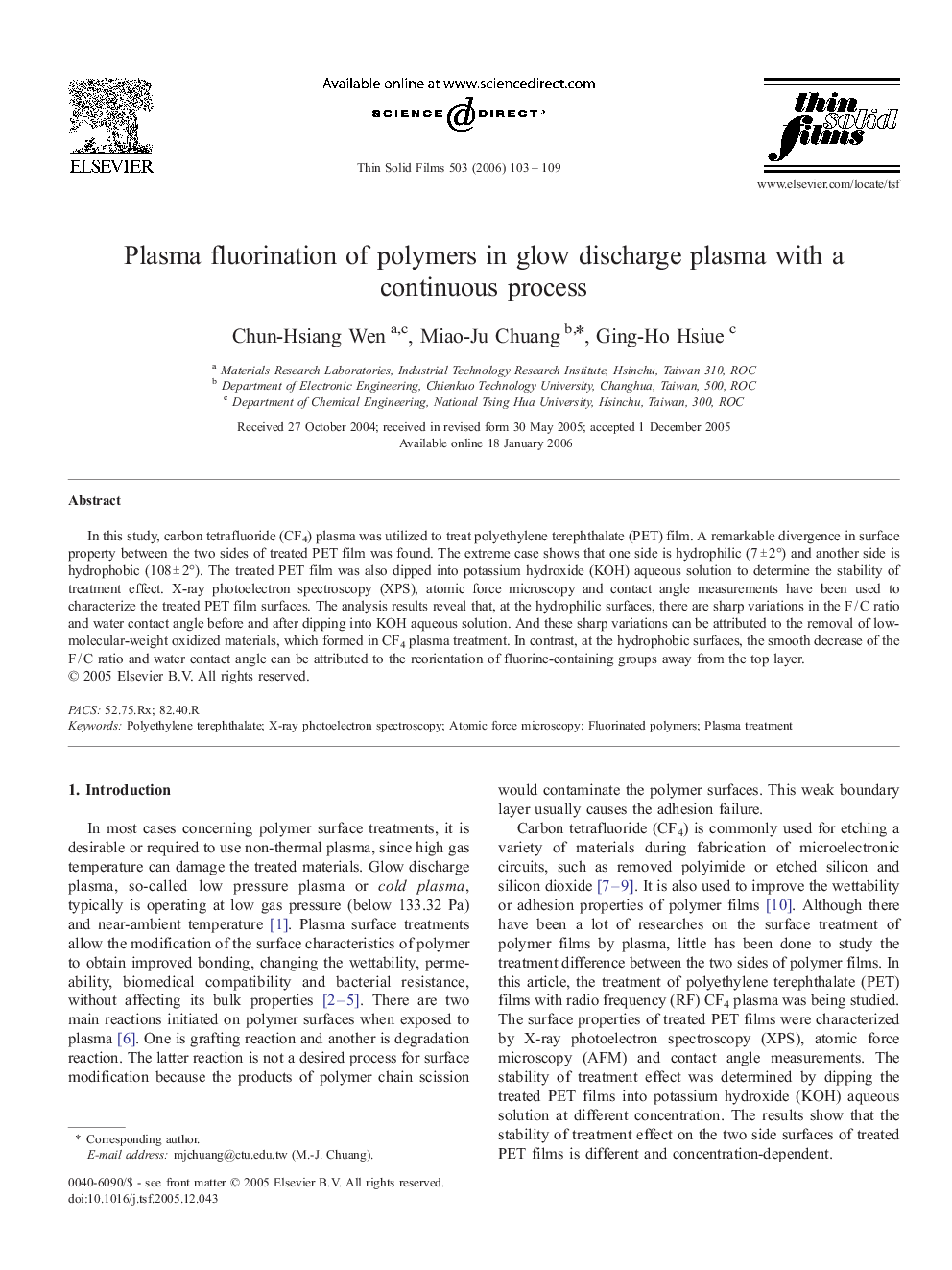| Article ID | Journal | Published Year | Pages | File Type |
|---|---|---|---|---|
| 1677063 | Thin Solid Films | 2006 | 7 Pages |
In this study, carbon tetrafluoride (CF4) plasma was utilized to treat polyethylene terephthalate (PET) film. A remarkable divergence in surface property between the two sides of treated PET film was found. The extreme case shows that one side is hydrophilic (7 ± 2°) and another side is hydrophobic (108 ± 2°). The treated PET film was also dipped into potassium hydroxide (KOH) aqueous solution to determine the stability of treatment effect. X-ray photoelectron spectroscopy (XPS), atomic force microscopy and contact angle measurements have been used to characterize the treated PET film surfaces. The analysis results reveal that, at the hydrophilic surfaces, there are sharp variations in the F / C ratio and water contact angle before and after dipping into KOH aqueous solution. And these sharp variations can be attributed to the removal of low-molecular-weight oxidized materials, which formed in CF4 plasma treatment. In contrast, at the hydrophobic surfaces, the smooth decrease of the F / C ratio and water contact angle can be attributed to the reorientation of fluorine-containing groups away from the top layer.
